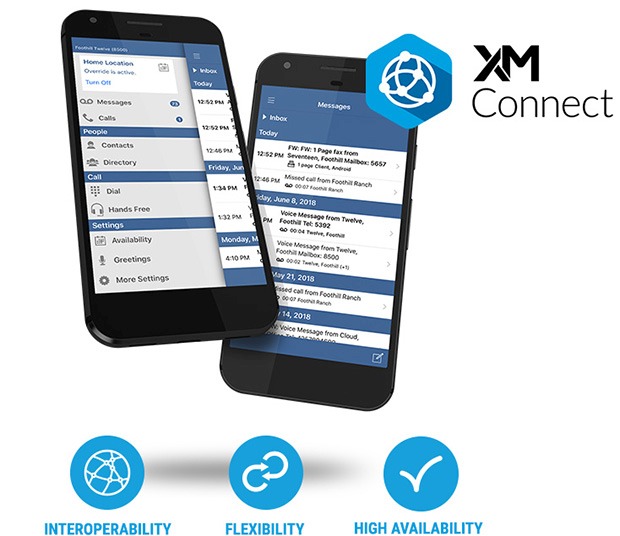Below is our recent interview with Tom Minifie, Vice President & General Manager, Voice Solutions at XMedius:

Q: Could you provide our readers with a brief introduction to XMedius and your solutions?
A: XMedius is an independent software vendor that develops industry-leading Unified Communications and secure document exchange solutions. The company has been delivering enterprise-grade communications tools for over 35 years, and pioneered many must-have features, such as board-less Fax over IP and Unified Messaging (UM).
Our solutions are available on-premises, in the cloud, or in hybrid cloud environments, and are relied upon by major corporations, healthcare providers, banks, education organizations, and government agencies around the world.
 Recommended: Meet MirrorTrip – A Car Rental Solution That Securely Connects You To People With Similar Travel Plans
Recommended: Meet MirrorTrip – A Car Rental Solution That Securely Connects You To People With Similar Travel Plans
Q: Big changes are underway with Microsoft Exchange. How does this affect organizations that use UM from Microsoft?
A: Microsoft has announced two major changes to the way Exchange handles UM. The first is that, as of December 1st, 2019, Exchange Online UM will no longer support Session Border Controllers (SBCs). SBCs provide an essential bridge between 3rd party onsite PBXs and the Exchange Online Unified Messaging software, allowing the two to talk to each other in order to deliver voicemail into the Exchange system. Without SBCs, their existing system will lose UM functionality.
Secondly, Microsoft Exchange Server 2019 no longer includes UM at all. That functionality has shifted to Microsoft’s Cloud communications package. This means that organizations that upgrade to this version of Exchange without transitioning from their PBX to the Microsoft Cloud will lose their UM. While the last version of Exchange with UM (2016) won’t reach mainstream end of life until October of 2020, many organizations will want to upgrade before then to take advantage of the new version’s features.
Q: What options do companies have to avoid losing UM functionality?
A: As mentioned above, Microsoft is offering their own solution: Cloud Voicemail. However, this requires replacing your phone system with either Skype for Business Server or Microsoft Phone System because Cloud Voicemail does not support 3rd party phone systems.
Fortunately, there is a solution that can allow them to keep their existing infrastructure and use either Exchange Online or upgrade to Exchange 2019 on-premises: implementing an interoperable XMedius voicemail system that facilitates UM. XMedius XM Connect is a PBX-agnostic solution that can bridge the gap between your PBX and Exchange Online, even without a SBC.
Q: How are some major corporations solving this problem?
A: Many organizations aren’t ready to take their voicemail and other PBX functions online. This is often out of a desire to get more years out of their existing hardware investments. Internal policies requiring physical control of hardware containing an organization’s data (often for regulatory compliance purposes) can also be a factor.
We worked with a global manufacturing company to help them preserve UM for their 5,500 users. Adding the XM Connect solution to their existing infrastructure allowed them to continue to use their on-premises Cisco Unified Communications Manager PBX with Exchange.
A major public university found themselves in a similar situation because they relied on an SBC link between their Avaya PBX and Exchange in Office 365. The XM Connect solution bridged the gap and delivered full-featured UM that mimicked Exchange’s end user experience, eliminating the need for retraining. As a bonus, the new voicemail was also able to leverage High Availability functionality to ensure their system always stayed up.
In both these cases, because the organization was able to add a single software solution rather than doing a full rip & replace, it was an extremely cost-effective fix.
 Recommended: Importance Of Blogging For SEO
Recommended: Importance Of Blogging For SEO
Q: From a channel perspective, what do sales reps need to know about this transition – how to help their customers, etc.?
A: It’s essential that channel reps warn customers of the deadlines well ahead of time. This is a powerful opportunity to have a sales conversation with existing accounts and open doors to new ones. Customers will be grateful for the advance warning and eager to find a solution that works within the constraints of their policies and budget.
By being aware of the available options, reps can guide their customers to a solution that will keep their system in peak shape while facilitating other changes the organization expects to make in the future. Customers who feel that their channel rep not only fixed their current problem, but helped them avoid upcoming issues, are likely to return for future needs.
Q: Anything you would like to add about how XMedius specifically can help facilitate the transition?
A: XMedius’s XM Connect UC solution is the leading independent UM system. It has been developed from the ground up with extreme interoperability in mind. As a brand- and PBX-agnostic solution, it can not only work with whatever infrastructure is already in place, but also facilitate future changes, including a transition to the cloud. Organizations can keep what they have, while preserving one of the most powerful tools in their arsenal: flexibility. In the future they can add or remove components of their infrastructure in whatever way best suits their budget, policies and requirements, without painting themselves into a corner.

